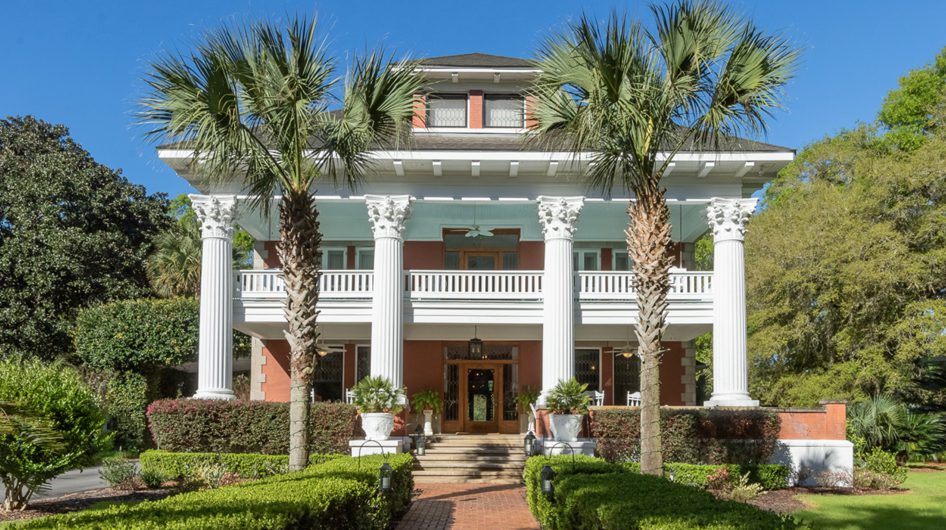When it comes to old buildings, how much of the past should we preserve?
How important is it to preserve and restore historic public buildings and private homes? What do we have to gain from reclaiming and preserving the past?
The National Trust for Historic Preservation is the leading organization for saving the buildings of the past. A few years ago they completed research to see if younger adults cared about their cause and found that 90% of Millennials support the work of historic preservation. Which is a good sign for the future of preservation.
The movement for historic preservation started in the 1850s when our country wasn’t yet 100 years old. In 1966 President Lyndon Johnson signed into law The National Historic Preservation Act, which established the Advisory Council on Historic Preservation, The State Historic Preservation Office, and the National Register of Historic Places.
The most visited historic home in the U.S. is Monticello, the home of Thomas Jefferson. Jefferson called it “his essay in architecture.” Being there is a glimpse into the life of one of our founding fathers and one of the most innovative thinkers of early America. It is on the list of World Heritage Sites.
Visiting historic sites and preserved homes is one of my favorite things to do when I travel. In 2020 I had reservations to spend several days in late April at the Biltmore Estate in Asheville, NC. Built by George and Edith Vanderbilt, it is considered to be the most authentic example of Gilded Age architecture in America. Unfortunately, by late April in 2020 Biltmore Estate, like everything else, was on Covid-19 lockdown and my visit was canceled.
Biltmore ranks #2 in historic homes people visit. Others that are on the most popular list include Graceland, Elvis’s home in Memphis, TN; Hearst Castle in San Simeon, CA; Mount Vernon, George Washington’s home in VA; The Breakers in Newport, RI; the Betsy Ross House in Philadelphia; and Fallingwater, considered to be Frank Lloyd Wright’s architectural masterpiece in southwestern PA.
Walking through a preserved and restored historic home gives you insight into life in the past in ways you can’t get from a book. The experience of being in the home, seeing it in its setting, helps expand an appreciation and understanding of our history and culture.
When you experience history, you understand why it shouldn’t be rewritten and how the lessons learned from history are forever changing as new insights and contemporary perspectives make us take second and third looks at events of the past. We shouldn’t diminish the importance of the past. If anything, it is important to preserve it so we can learn from it.
My favorite preserved home that I’ve visited is Beauport in Gloucester, Massachusetts. It was built in 1908 as a summer house for decorator and antiques collector Henry Davis Sleeper. It’s operated by the Society for the Preservation of New England Antiquities (SPNEA).
The house is an ongoing series of surprises and architectural quirks. A room with a staircase that goes nowhere. A room where an entire wall can be released and dropped down into the framework, exposing the side of the room to the ocean and rocky beach below. Dramatic and breathtaking.
Many historic homes are now restored as B&Bs. When you travel you can sleep there, dine there, and meet new people who share your curiosity and appreciation about the past. My photo albums are full of pictures of the many historic B&Bs I’ve stayed in. Last April I spent three nights at Herlong Mansion in Micanopy, FL, which is the picture with this blog. Built in 1845, its on the National Register of Historic Places.
How do we determine which old buildings deserve to be preserved, restored, and protected? How do we balance the preservation of old buildings while encouraging new forms of architecture? Is the answer one of economics? Should we allocate money to preservation for the sake of history, or preserve in order to create revenue generating destinations? Why not both?
Historic buildings, both public and residential, once destroyed, cannot be replaced. When they are preserved and restored, generations to come can experience the evolution of events, culture, and life in our country. They are doorways to knowledge at both national and local levels.
The National Trust has a list of the most endangered places that need to be preserved and restored. They include Selma to Montgomery campsites in AL, the Riverside Hotel in Clarksdale, MS, and the Oljato Trading Post in San Juan County, UT.
These are not mansions or homes of the wealthy. They are part of the shift in preservation. Recognizing that historic significance is not tied to opulence but to influence. By doing that we keep the story of America alive at every level and for everyone.
“If we don’t care about our past, we cannot hope for the future.”
Jacqueline Kennedy Onassis
If you enjoyed this blog and know someone else who would enjoy it, please share it.

